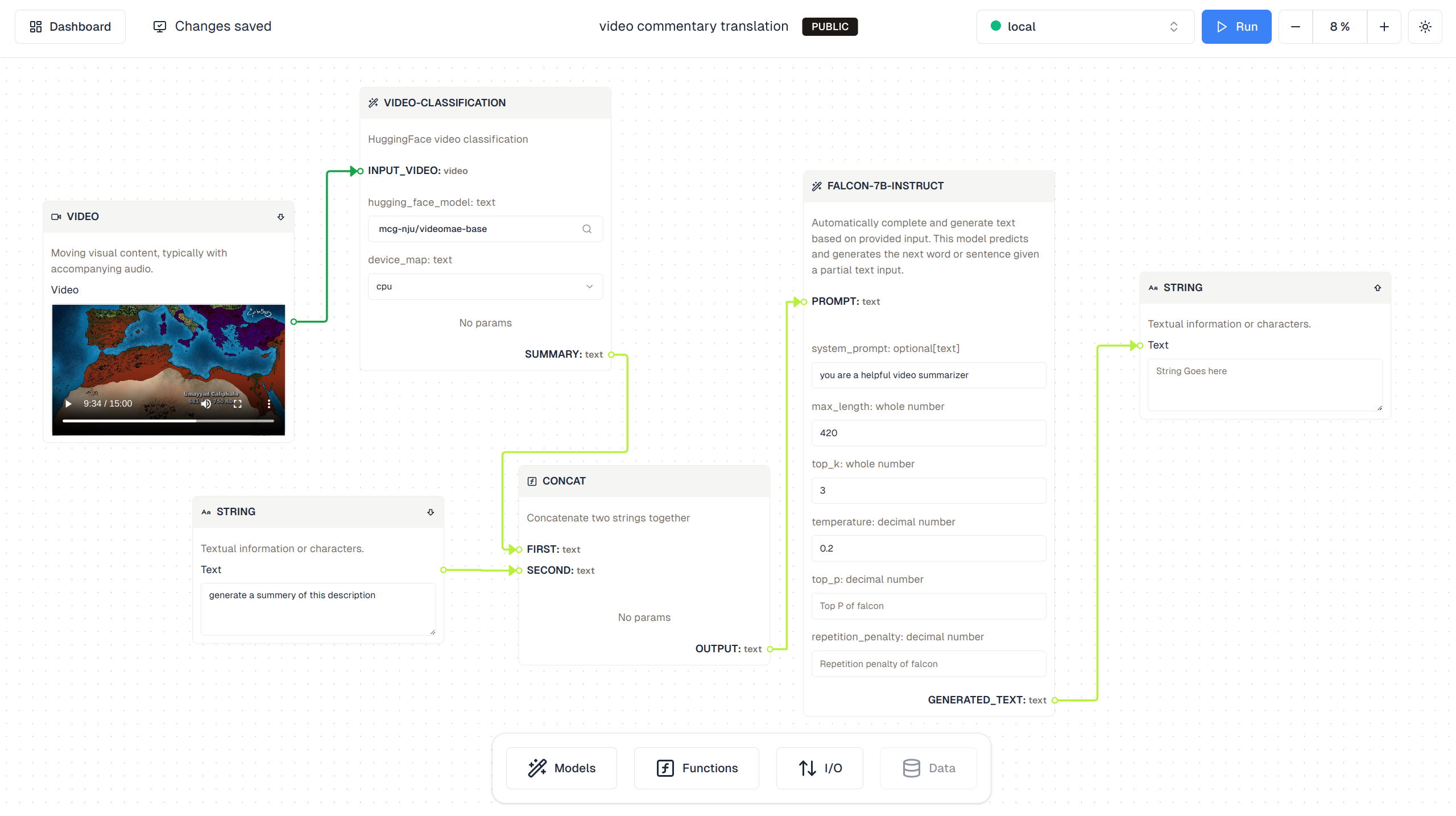Blueprints
Blueprint
The foundation of Hyko lies in the concept of a Blueprint. A Blueprint in Hyko is a central entity for creating and managing AI pipelines. It serves as the canvas where users can visually construct their pipelines. Within the Blueprint, users can drag and drop components from the Hyko Toolkit, visually arrange them, and establish connections between them to build the desired AI pipeline. With blueprints, users can create, share, browse and extend solutions on Hyko Hub, fostering collaboration and innovation.
Public and Private Blueprints
When creating a blueprint in Hyko, users have the option to specify its visibility as either public or private. Public blueprints are automatically shared on Hyko Hub, allowing other users to explore, star and fork for their own use. In contrast, private blueprints are visible only to the creator, ensuring confidentiality for projects that are still in development or require privacy. Users can easily switch between public and private visibility settings, giving them control over who can access and interact with their blueprints in Hyko.
Blueprint Components
Each component in the blueprint is referred to as a Node, which has inputs and outputs. These inputs and outputs define the interface of the node, and they are referred to as Ports. Input and output ports are displayed as small circles on the node, with each port labeled with a name and type, providing a clear definition of the data they handle. Users can connect these ports to establish the flow of data within the pipeline. This connection between ports is represented by an Edge. Edges visually represent the data flow between nodes, showing how the output of one node is connected to the input of another.
It is essential to note that ports with incompatible types cannot be connected, enforcing logical and error-free pipelines.
Possibilities are endless with the blueprints, you can combine different types of nodes from the Hyko Toolkit to create customized solutions tailored to your specific requirements.
Blueprint Execution
The execution of a blueprint in Hyko refers to the process of transforming a user's visually constructed pipeline into actionable results. Once a user has assembled their blueprint by arranging and connecting the nodes, they can initiate its execution.
The execution process begins by passing the input data through the connected nodes. Each node, representing a specific model or function, processes the data it receives and generates results that are then transmitted through the edges to the next nodes in the pipeline. The connections between nodes form an execution graph, which defines the flow of data within the pipeline. This graph ensures that data is passed from one node to another in the correct order, according to the pipeline design.
It's crucial to note that this execution is not sequential but concurrent, meaning that nodes can process data simultaneously, enhancing the speed and efficiency of the overall execution.
The execution of a blueprint occurs on the user's computer, refer to the section Computers for more detailed information about computers in Hyko, this ensures that all data, including inputs and outputs, remain private to the user.
Example Blueprint

Getting Started
Ready to try out blueprints in Hyko yourself? Follow our guided tutorial to create and excute your first blueprint in Hyko.